Naval Museum of Halifax

Our History. Their Stories. Your East Coast Navy.
Immerse yourself in the history of the Royal Canadian Navy at the Naval Museum of Halifax, a Department of National Defense Museum. The Museum fosters an understanding of the rich and dynamic history of the Royal Canadian Navy (RCN), with a focus on Atlantic operations. Spanning from the foundation of the RCN in 1910 into its more modern configuration, the Museum strives to inspire curiosity about, and to celebrate, the contributions of those who have served.
Feature story
The Royal Naval Burial Ground of Halifax

Did you know that the Royal Naval Burial Ground of Halifax is one of the oldest military burial grounds in Canada? The land was acquired in 1783 and it has a long history associated with naval exploration, warfare and the foundation of Halifax. This burial ground has honoured British and American sailors, “pressed men” (men forced into service for the British Royal Navy), as well as workers from Her Majesty’s Canadian (HMC) Dockyard and their families. The first known burial was James Couch in 1791, a carpenter of the British Royal Navy’s H.M.S. Adamant. By 1813, there were 428 burials recorded and the grounds were declared “full.” Originally, no register of interment appears to have been kept. However, in 1860 an effort to document past and ongoing burials began. By 1895, this burial ground spanned four acres. It originally included the original naval hospital (located near the Halifax waterfront) and bordered the property of Admiralty House. There have been no burials since the British Royal Navy turned over this naval station to Canada in 1906.
-
Our story
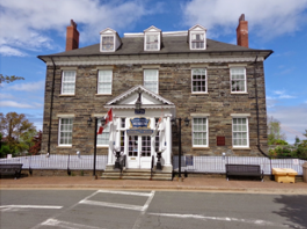
The Naval Museum of Halifax, located at Canadian Forces Base Halifax (Stadacona), officially opened to the public as the Maritime Command Museum on March 26, 1974. Over almost 50 years of operations, our goal has been to enrich understanding of the dynamic history of the Royal Canadian Navy (RCN), particularly in the Atlantic, spanning from its roots in the Royal Navy into its more modern configuration. The Museum exists to inspire curiosity about, and to celebrate, the contributions of the people who have served. Exhibits and programming strive to share stories of Canada’s East Coast operations, stimulating interest, knowledge, and understanding of the achievements and challenges faced by the RCN.
What can you explore at the Museum?
- A nationally significant art and artifact collection;
- A diverse photographic collection, archive, and reference library collection;
- Three levels of exhibitions developed by the Museum’s dedicated staff and volunteers; as well as
- Admiralty Gardens and the Naval Burying Grounds, which are only a short walk away.
-
Admiralty House, NHS

Admiralty House is the former official residence of the Commander-in-Chief of the North American Station of the Royal Navy. Construction of this Georgian-style home overlooking Halifax’s historic dockyard commenced in 1814 and was completed in 1818. The first resident was Admiral David Milne, followed by many notable residents such as Admiral Thomas Cochrane, Earl of Dundonald.

The Canadian Government took possession of the house in 1905. It served as a hospital during the First World War, until the roof was badly damaged in the 1917 Halifax Explosion. Once repaired, the house was lent to the Massachusetts Halifax Relief Commission who used it to assist the people of the North End community that were still recovering from the devastation of the explosion. From 1925-1954, Admiralty House was home to the Wardroom, and contained offices and living quarters. Eventually, the home became a library, school, and now is home to the Naval Museum of Halifax.
-
On exhibition
“Ready Aye Ready” - Founding of the Royal Canadian Navy
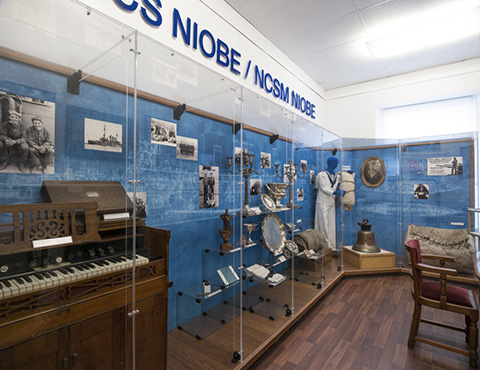
At the turn of the 19th century, the British were preparing to withdraw their protection of the former North Atlantic Station. In response to this growing security risk, and with a weathered eye on growing political tensions in Europe, Canada established its own naval force. Explore “Ready Aye Ready” to learn more about the establishment of the Royal Canadian Navy.
After the Explosion: Rebuilding Halifax’s North End

On December 6, 1917, the French munitions ship SS Mont Blanc collided in the Halifax Harbour with the Norwegian supply ship SS Imo. The Mont Blanc quickly caught fire and at about 9:00 am its cargo of explosives detonated, devastating the city of Halifax. Discover how the navy was impacted, and the role played by the Royal Canadian Navy in helping the North End community to rebuild.
At Last… On Active Service: the Great War

At the dawn of the First World War, Canada’s fledgling navy consisted of two ships and a compliment of about 350 men. Dive into how Canada’s new Royal Canadian Navy rose to the challenge of defending Canada: Celebrate the successes and understand the losses of those who served.
The North Atlantic Station: the British and the Port of Halifax
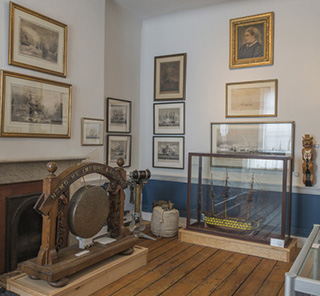
Perfectly positioned in one of the world’s largest and deepest natural harbours, the British North Atlantic Station was a strategically important base for the British Royal Navy. Learn how this presence in Halifax shaped the development of the city and founded one of the largest, and oldest naval bases in Canada.
The Battle for the Atlantic (1939-1945)

Did you know that by 1945 the Royal Canadian Navy had grown to 95,000 personnel and over 400 commissioned vessels? The third-largest in the world, Canada’s navy helped 25,000 merchant ships sail to Europe during the Second World War. Consider what factors contributed to the growth of our navy in this feature exhibition.
North of 60
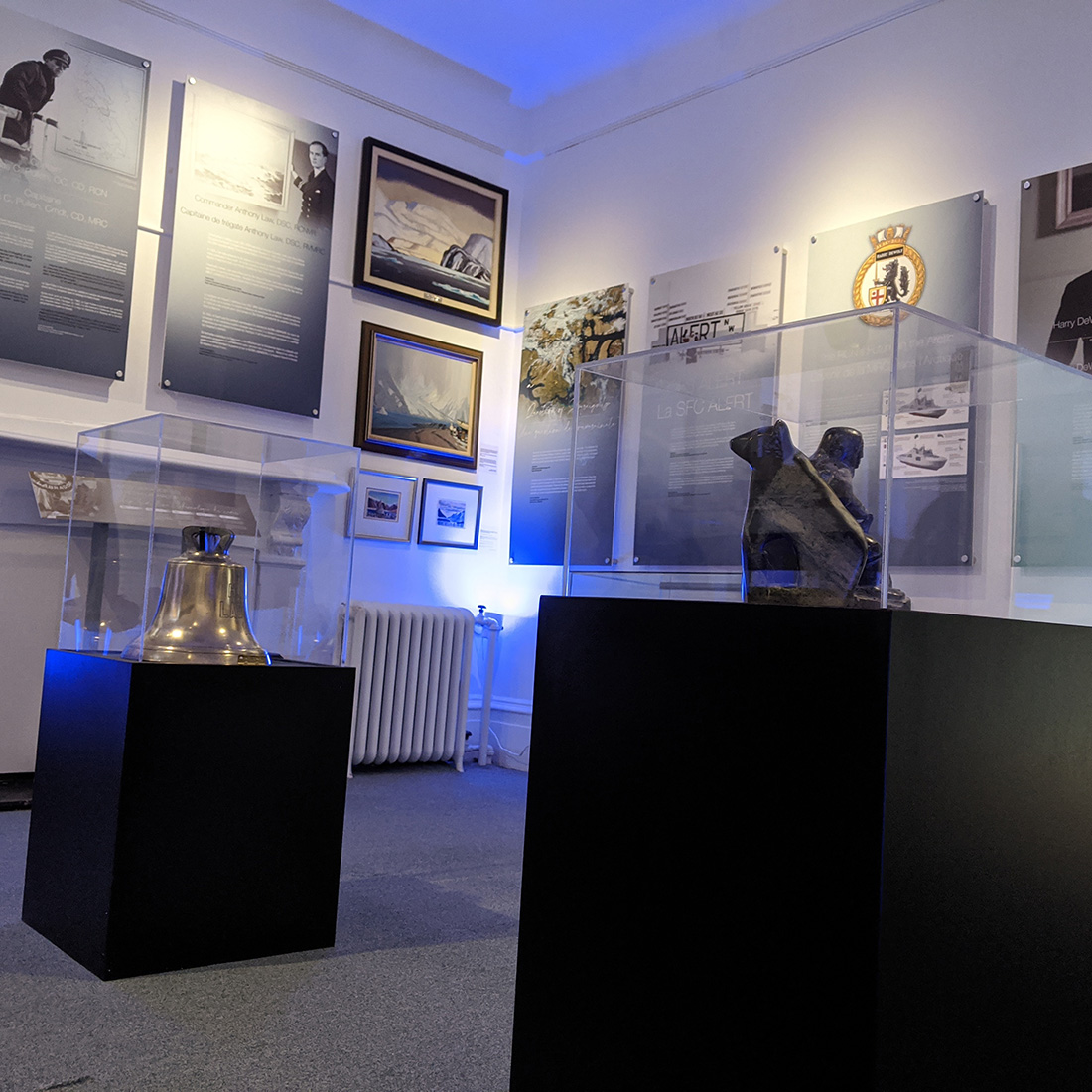
The Artic is a place that captures the imagination. The stark, and at times unpredictable regions of the North are full of culture, wildlife, and geographical wonders. This remote region is difficult to explore and navigate, especially through the great Northwest Passage. Explore the challenges of early northern exploration and how the RCMP vessel St. Roch and then HMCS Labrador played a vital role in the establishment of Canadian sovereignty in the North.
Dressing with Purpose

Steeped in a history of tradition, politics, fashion and distinction; the Royal Canadian Navy’s uniform is unique, and its development reflects the creation of a naval identity within Canada, and the RCN’s struggle to establish itself as “Canadian”. Explore how this uniform’s evolution reflects the navy’s shared customs and traditions, and how those traditions have preserved their unique character within the Canadian Armed Forces.
Diving Now! Diving Now! Submarines in the Service of Canada

Dark, cramped, technologically complex, and unpredictable; submarines and the life of a Submariner are not for the faint of heart. Discover how generations of highly trained sailors have faced the challenges and hazards of life underwater.
Challenging Traditions
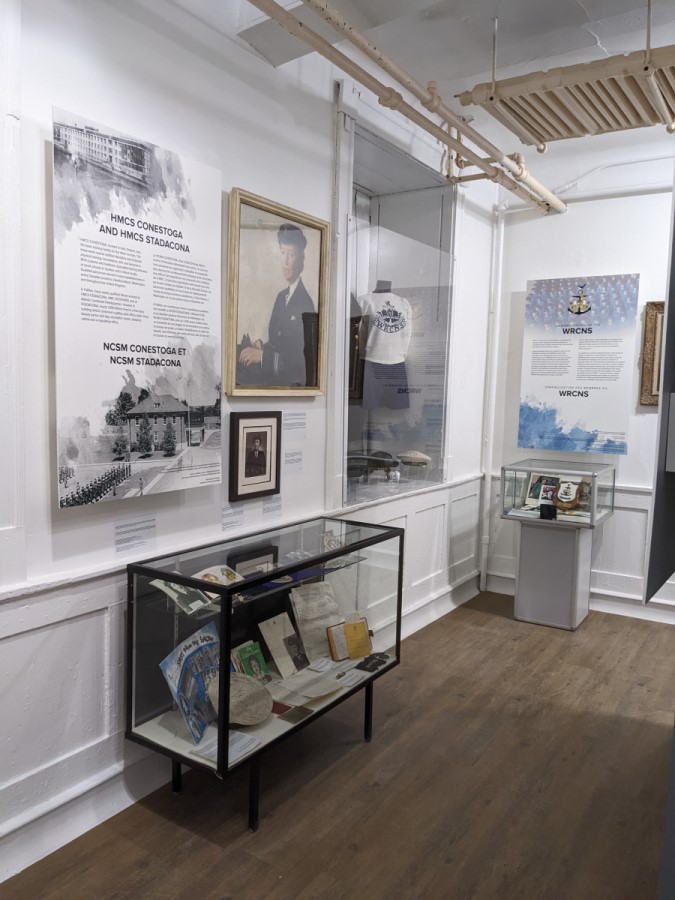
For many decades women have played an integral role in the formation of today’s Royal Canadian Navy (RCN). No matter their age, race, marital status, or preferred term of identity, women are now successfully employed in a variety of occupations and among all rank levels in today’s navy. However, this was not always the case. Prior to 1942, when the Women’s Royal Canadian Naval Service (WRCNS) was established, the Navy was virtually inaccessible to women. This exhibit explores the history of women in the RCN, including the stereotypes that initially prohibited women from serving, the challenges they faced, and how these experiences have positively contributed to the development of the Navy of today.
The Bell Room

Do you know for whom the bell tolls? Do you know why? Ships bells are used for signaling, keeping time, and sounding alarms. Discover why bells are an important part of a ship's routine and readiness.
-
Book the museum
The Museum has the great fortune to be housed within Admiralty House, a stunning 200-year–old, Georgian-style mansion which features beautiful naval inspired motifs, vaulted ceilings and marble fireplaces.
People have booked this beautiful facility for private tours and parties, meetings, conferences, intimate dinners and weddings.
If you are interested in a tour, or hosting your event at the Museum, please contact us at navalmuseumofhalifax@forces.gc.ca or 902-721-8250.

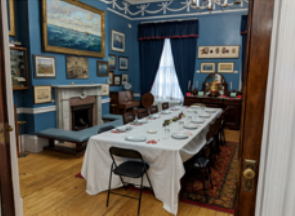
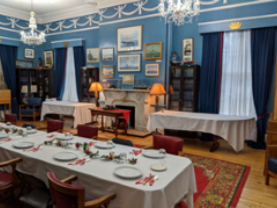
-
Plan your visit
Museum Hours
Monday 9:00am to 4:00pm Tuesday 9:00am to 4:00pm Wednesday 9:00am to 4:00pm Thursday 9:00am to 4:00pm Friday 9:00am to 4:00pm Saturday Closed Sunday Closed Please note that the Museum is closed during all statutory holidays.
Groups wishing to visit the Museum outside of regular business hours may do so by appointment only.
Contact information
Naval Museum of Halifax
- Admiralty House
- 2729 Gottingen Street
- PO Box 99000, Stn Forces
- Halifax, NS B3K 5X5
- navalmuseumofhalifax@forces.gc.ca
- Phone: 902-721-8250
- Social Media: @NavalMuseumHFX
Admission
The museum operates by donation only so please visit us any time.